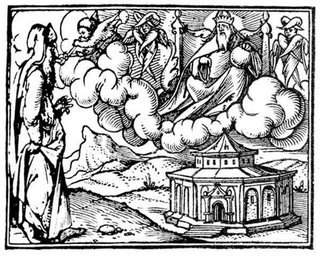Imago Dei: Part 6

For the immediately preceeding post in this series, please click here.
In yesterday's post, we looked at the way that Psalm 8 connects God's royal ennoblement of humanity with human frailty and transparency. Today, I want to argue that a related theme of imago Dei appears in Isa 40–66, although most scholars miss it.
The enigmatic portrait of the Servant of the LORD reveals an imago Dei, a royal majesty, granted to the most unlikely of candidates. Isaiah 52:13 reads, “See, my servant shall prosper; he shall be high and lofty (ירום ונשׂא).” The language is striking; several cross-references within Isaiah apply the same description directly to God.
 In Isa 6:1, recalling his commissioning, the prophet states, “I saw the Lord sitting on a throne, high and lofty (רם ונשׂא).” Isaiah 33:10 and 57:15 use the very same word pair of God. Amazing! Second Isaiah insists vehemently on God’s incomparability, yet its frail Servant of the Lord ends up elevated to divine status. As God’s viceroy, he will command global respect (Isa 52:15) and establish justice on earth (Isa 42:4).
In Isa 6:1, recalling his commissioning, the prophet states, “I saw the Lord sitting on a throne, high and lofty (רם ונשׂא).” Isaiah 33:10 and 57:15 use the very same word pair of God. Amazing! Second Isaiah insists vehemently on God’s incomparability, yet its frail Servant of the Lord ends up elevated to divine status. As God’s viceroy, he will command global respect (Isa 52:15) and establish justice on earth (Isa 42:4).To sum up today's and yesterday's posts, the PT source and Isa 40–66 share a unique theology of God’s nature, stressing its uncanny otherness, volatility, and inexpressibility. God’s likeness is absent from any reality other than God’s nature in God’s self. Nevertheless, we must reckon with God’s condescension to allow an imago Dei to appear among humanity incarnate in human frailty and servanthood (cf. Isa 57:15; 66:1–2).
This theology differs significantly from other perspectives on the imago Dei in the Bible. This series of posts has really only dealt with the imago in Holiness Theology and Reverence Theology. Perhaps future posts can push this investigation farther.
0 Comments:
Post a Comment
<< Home